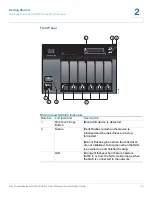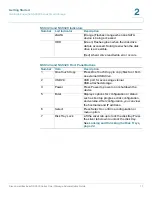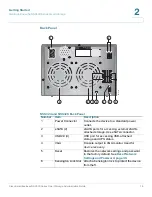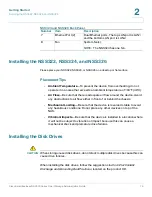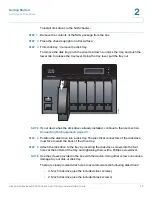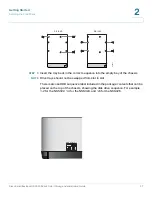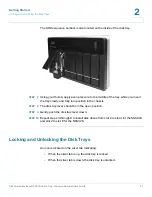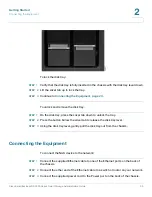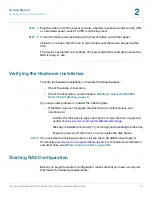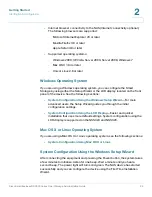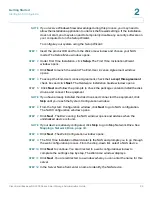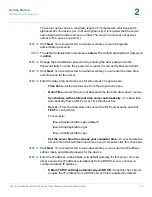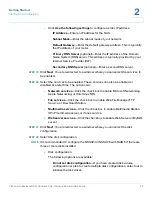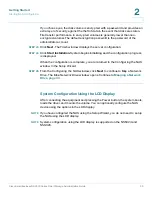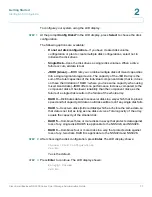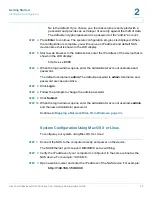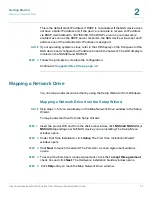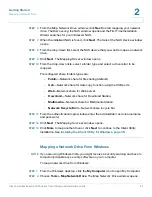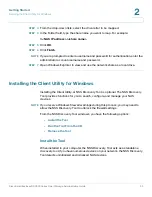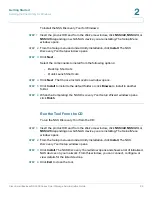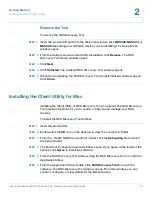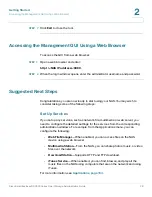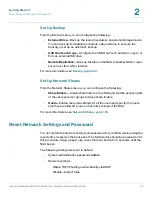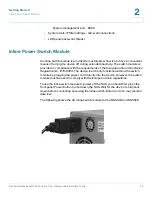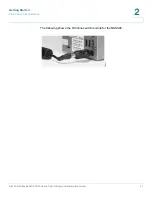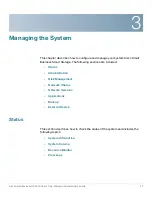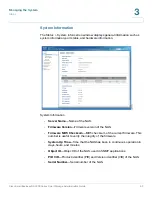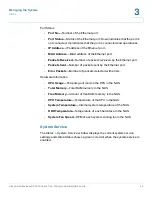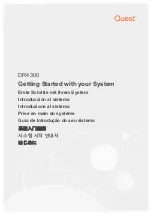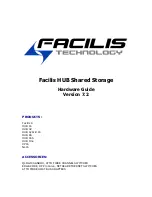
Getting Started
Starting NAS Configuration
Cisco Small Business NSS300 Series Smart Storage Administration Guide
29
2
-
Single Disk
—Uses the disk drives as single disk volumes. When a drive
failure occurs, all data is lost.
-
JBOD (Linear)
—JBOD lets you combine multiple disks of mixed
capacities into a single logical storage device. The capacity of the JBOD
array is the sum of the total capacities of the individual component disks
(that is, it does not have the limitation of RAID 1 where you lose some
capacity when using mixed sized disks). JBOD offers no performance
increase compared to the component disks. It has lower reliability than
the component disks, as the failure of a single disk results in the failure of
the whole array.
-
RAID 0
—Distributes data across several disks in a way that improves
speed and full capacity. All data on all disks will be lost if any single disk
fails.
-
RAID 1
—Uses two disks (mirrored disks) each of which store the same
data, so that data is not lost as long as one disk survives. Total capacity of
the array equals the capacity of the smaller disk.
-
RAID 5
—Combines three or more disks in a way that protects data
against loss of any single disk. RAID 5 is applicable to NSS324 and
NSS326.
-
RAID 6
—Combines four or more disks in a way that protects data against
loss of any two disks. RAID 6 is applicable to NSS324 and NSS326.
•
File system:
-
EXT4
—EXT4 is the successor to EXT3 and provides better performance
because the EXT4 file system can support very large volumes (default).
-
EXT3
—EXT3 is commonly used in the Linux environment. EXT3 provides
reliable file systems with a maximum capacity support up to
16 terabytes (TB).
•
Encrypt disk volume:
-
No
—Do not encrypt the disk volume (default).
-
Yes
—Encrypt the disk volume using a password.


